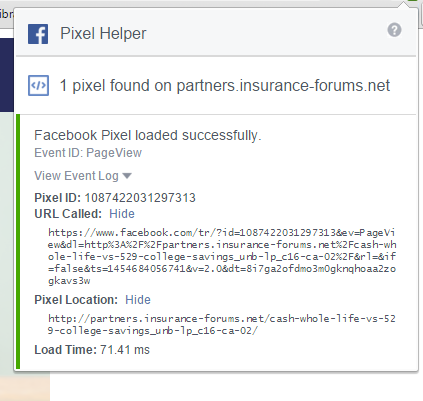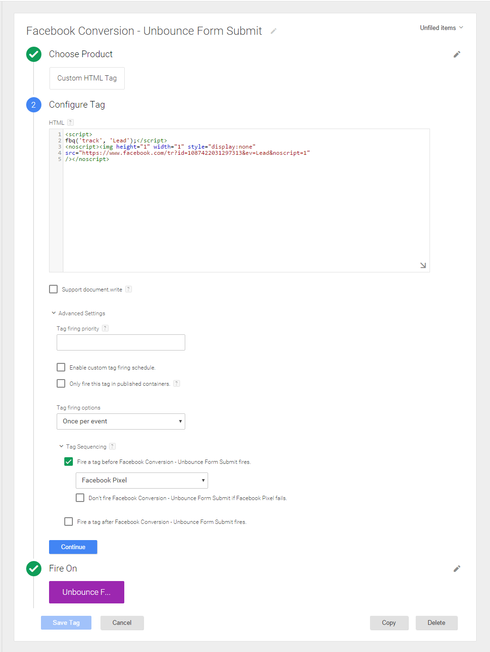Sam,
There is a way, there is always a way 🙂
The best way is to use google tag manager. If you are not familiar with tag manager it is pretty easy to setup and use. This is the link I used to find the advanced implementation. https://www.facebook.com/business/help/1021909254506499
![Link https//wwwfacebookcom/trid1473600599565049evViewContentnoscript1]()
https://www.facebook.com/tr?id=012345679012345&ev=ViewContent&noscript=1" />
Key point to remember edit after ev=PARAMETER to match the lead objective
The id= you need to change to your account. You would fire the tag on the submit of the form, not on page load. This is actually more reliable than loading the url IMHO… less of a change of page load failure etc.
If you need help ask away… plenty of people here know about GTM facebook pixels etc.
Good luck,
Joe
Thanks Joe! I’ll dive in and give it a shot - I’ll be back if I run into any issues 🙂
I followed these instructions late yesterday afternoon, and thought I had set everything up properly. However, overnight we received a handful of Unbounce conversions from Facebook ads, but still no “leads” showing up in my Facebook reports. I have a feeling I may have screwed up in how I created the trigger in GTM. I have included screenshots of everything below. Any ideas of where I may have slipped up? Thanks!
Here is the my “base code” in GTM for the Facebook Pixel. This has been live on my Unbounce landing pages for a few weeks now, and I have confirmed it’s working via the Pixel Helper Chrome Extension.
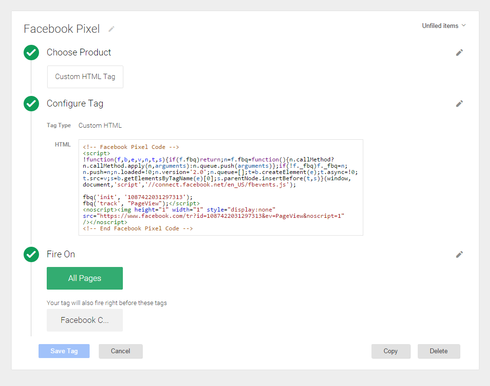
Here is the new tag I added in GTM for the Unbounce form submit, where I followed the instructions in the link you provided for the advanced implementation:
Here are some more details on the firing rules in the tag setup in GTM:
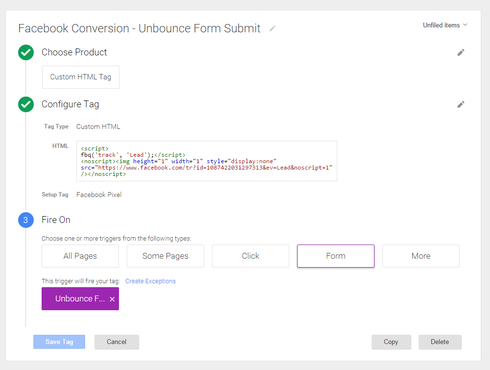
Here is how I have the trigger configured. My gut tells me this is probably where I screwed up… specifically in the “Enable When” portion. I have it set to fire when the page URL contains the subdomain that we have our Unbounce pages sitting on.
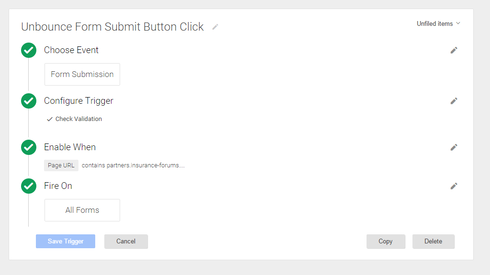
Here is how I have the GTM container code implemented within Unbounce Script Manager.
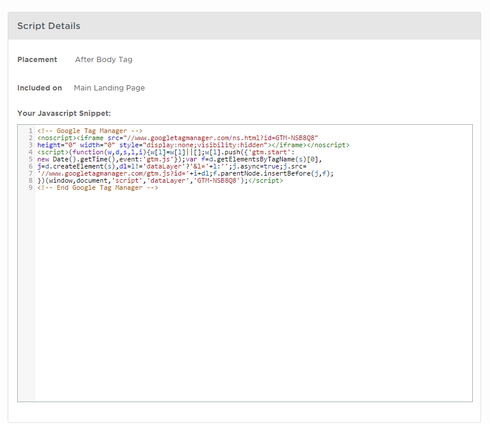
Here is the Pixel Helper extension showing that the pixel is loading on the landing page. This looks the same as it did before I tried implementing the conversion tracking as I am also firing the Facebbook pixel on the landing pages to build custom audiences.
